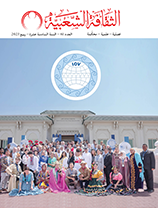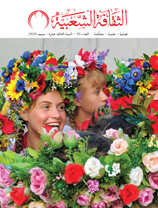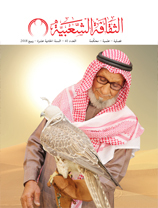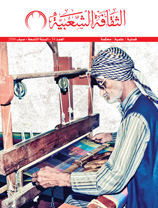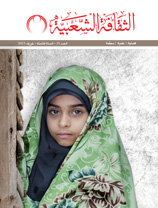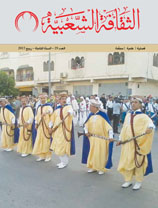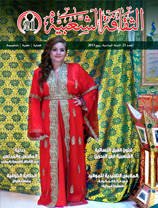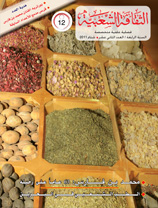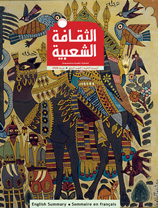Arabic coffee
Issue 15

Abdul Karim Eid Al Hashash (Syria)
Sheikh Al ‘Idraws, who died in 909 A.H., discovered coffee in Yemen. During his travels, he came across coffee trees and ate the beans. He found they refreshed him and kept him alert, which allowed him to worship more vigorously.
Sheikh Al ‘Idraws, a Sufi of the Shadhili order, then began eating and drinking coffee and recommending it to his followers. In some areas of the Levant and Egypt, people still call the coffeepot ‘Shadhili’. After Al ‘Idraws’s discovery, coffee spread through Yemen, Arabia, the Levant and Egypt and then to the rest of the world, although scholars’ opinions of coffee differed in the early tenth century AH.
In Europe, coffee was unknown until the beginning of the seventeenth century AD. The first coffee shop opened in Istanbul, followed by coffee shops in Vienna and England in 1652, and then others opened in Germany, France and the rest of the Europe. Charles II decided to close coffee shops in England because people used them as places to meet and discuss politics, but this did not stop coffee from spreading throughout the world.
Some believe that coffee originally came from Ethiopia, and they attribute its name to Kafa, a small Ethiopian village. It is assumed that coffee beans came to Yemen from Ethiopia, and then spread to the southern Arab countries before reaching Java, Ceylon (the former name of Sri Lanka), Surinam (in 1781), the West Indian island of Jamaica, Brazil and South America.
Coffee is considered a sign of being cultured and, over time, certain traditions and rituals have become associated with coffee. Arabs believe that serving coffee is a sign of nobility, and the oldest person is always served first. Guests are also given priority when coffee is served.
It takes over an hour and three coffeepots to prepare Arabic coffee. One coffeepot is used to brew the coffee, one to prepare the coffee, and the third to serve the coffee.
Plain coffee, (qahwah sādah), is not sugared, while Al Riha coffee is drunk with a little sugar, and sweet coffee is served heavily sugared. As for coffee roasting, there is dark coffee and light golden coffee. Ginger is often added to the latter, which is popular mostly in the Arabian Gulf countries.
Coffee-related tools:Coffee bag: Traditionally made of gazelle leather, the bag has a leather drawstring and it keeps coffee beans fresh. Small quantities of coffee beans are roasted daily for their delicious, fresh taste and for the enjoyment of the process of roasting, grinding and preparing the coffee.The brazier: Fire is lit in a brazier made of iron or copper, and then the coffeepots are placed on it. Some use a small pit instead.
Coffeepots: These are made of copper, with one pot used for preparing the coffee, one for brewing, and a third smaller pot with a longer handle for pouring. Nowadays people use vacuum flasks, but Hamid Bin Mayiqah Al Hubabi advises that coffee should not be kept in a flask for long or it will lose its fresh taste and the steam will condense, while coffee in a pot placed directly over the fire will retain its taste and the steam will evaporate.
Coffee is served at weddings and served without accompaniments at gatherings to offer condolences. Some consider spilt coffee as a good omen while others disagree, with one proverb that translates as “The clumsy spill coffee and claim it is a sign of good luck”.











